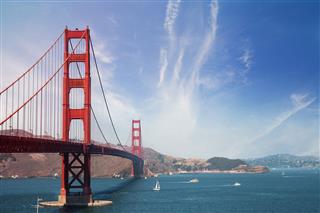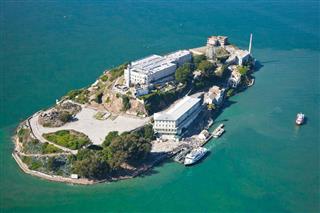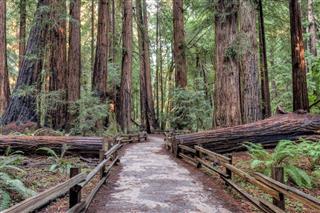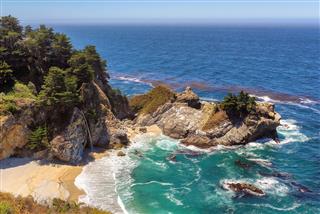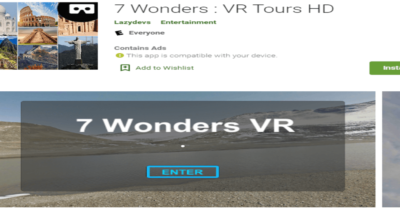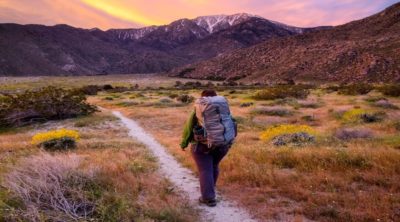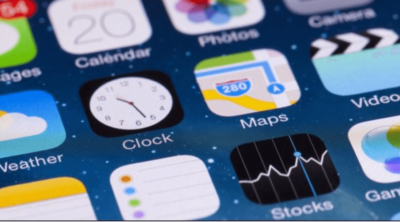
A road trip from Seattle to Los Angeles is one of the most scenic drives in the country. Planning it, however, isn’t a piece of cake. The journey is long, with lots of tempting places calling for frequent halts. Use these tips to make your drive a little easier.
Quick Tip
To cover as many places as possible, on your return journey, halt at places different to those you stopped on your way to Los Angeles.
To do a 1,400-mile road trip requires courage. Even with some of the most beautiful roads in the world, it takes a lot of patience and determination. The drive from Seattle to Los Angeles is one of the most scenic; it runs along the Pacific Coast Highway, U.S.―101, I―5, etc. Though you have an option of choosing I―5 as your main route, I would advise otherwise. The route that runs along the coast is one of the best in the world; there’s no reason to miss out on it.
Understand
Only parts of the route are designated as scenic byways. The Big Sur section―from San Luis Obispo to Carmel―is dedicated as a National Scenic Byway. Similarly, the segment between US 101 near Oxnard and Interstate 5 (I-5) in Dana Point is actually designated as the Pacific Coast Highway by the California Legislature. However, you can follow the coastal route irrespective of these designations; it’s just as beautiful, if not more.
How to Plan a Road Trip from Seattle to Los Angeles
Map
*This map is for representational purposes only; it’s approximate and not to scale.
Tips
- This road trip requires a lot of enthusiasm; it is a long drive. If you’re traveling with children, make sure you have enough stuff to keep them engaged―books, video games, etc.
- It is an extremely scenic drive; travel only through the day. Traveling in the evening or at night will mean you miss out on some spectacular views.
- Don’t push yourself to cover more places or miles. Drive at a speed you’re comfortable with, and cover spots with a pace that doesn’t tire you.
- Also, this route witnesses frequent landslides. Erosion along the coast isn’t uncommon either. Some routes are either closed or re-routed; expect surprise delays.
- If time is a constraint, avoid detours no matter how tempting they may seem. This way, you can accommodate surprises in your plan.
- U.S. Highway 101 in Oregon―a National Scenic Byway―is also designated as an All-American Road. Make sure you don’t miss out on it.
Must-see Spots
Seattle to Portland: 174 miles (3 hours)
Portland
On a mammoth road trip like this, Portland can be an ideal halt first up. A city famous for craft beer and its several microbreweries, Portland has plenty of sites that you can visit. Take for instance, the Shanghai tunnels, century-old horse rings, or the Museum of Contemporary Craft―oldest, continuously-running craft establishment in the country. Also, don’t forget to get a glimpse of the USS Blueback (SS-581).
Portland to Crater Lake National Park: 234 miles (4 hours)
Crater Lake National Park
The only national park in the state of Oregon has a lot to offer. It is home to Crater Lake―the deepest in the country. However, you can fish, hike, or stroll at this beautiful park only for a few months every year; snow starts as early as September.
Don’t forget to drive on the 33-mile-long Rim Drive, which runs along the caldera rim or stay at the Crater Lake Lodge, which is listed on the National Register of Historic Places. However, if you plan to halt at this park for the night, make sure you reserve a place in time; remember, the park is open for only a few months.
Crater Lake National Park to Cape Blanco State Park: 200 miles (4 hours)
Cape Blanco State Park
This state park can be your ideal halt, since it has electrical sites, cabins, and group tents for accommodation. It is home to Cape Blanco―the westernmost point in Oregon. Enjoy the Hughes House and lighthouse tours. Since the park has ample accommodation facilities, it can be your last-minute option for a halt.
Cape Blanco State Park to Redwood National Park: 90 miles (2 hours)
Redwood National Park
Hike, ride on horseback, and go kayaking at this UNESCO World Heritage Site. You must halt here for two days to view some of the tallest trees on this globe, walk alongside raging riverways, and stroll by a serene coastline. However, you must know that sites are available on a first-come, first-served basis. From developed campgrounds to backcountry campsites, you have a diverse style of accommodation to choose from.
Redwood National Park to Mount Shasta: 201 miles (3½ hours)
Mount Shasta
To visit/see Mount Shasta, the fifth highest peak in California, you will have to take a detour to Interstate 5. The detour, however, will be worth it. A U.S. National Natural Landmark, this beautiful mountain has inspired many poets and writers with its spectacular beauty.
Mount Shasta to San Francisco: 290 miles (4½ hours)
San Francisco
A one- or two-day halt at San Francisco has two main advantages. First, its position on your route makes it a perfect mid-way halt. Second, you get to see some really famous places such as the Golden Gate Bridge, Alcatraz Island (a National Historic Landmark, which was once a military prison and then a federal prison), Pier 33, sea lions at Pier 39, etc. Also, apart from these, the city is home to many other designated landmarks.
Mendocino, a county, is again a scenic place with a lot of state parks, such Mendocino Headlands State Park, Russian Gulch State Park, Mendocino Woodlands State Park, and Van Damme State Park. Apart from these parks, don’t forget a visit to Fort Bragg―a California Historical Landmark―that offers some of the most spectacular views of the ocean. The county is also home to several bed and breakfasts; reservation can thus, be done last minute.
You will have to travel from Mount Shasta to Mendocino (296 miles and 5 hours) and then from Mendocino to San Francisco (154 miles and 3 hours).
San Francisco to Carmel-by-the-Sea: 121 miles (2 hours)
Carmel-by-the-Sea
This city in Monterey County, also called Carmel, is your best bet if you want to just relax for a day or two (a day is more than enough though). It experiences a cool Mediterranean climate, which makes it a good option for a halt.
Considered one of the most dog-friendly places in the state, Carmel-by-the-Sea deserves a day of your trip. However, you’d want to be careful and not wear heels. The municipal code bans everyone from wearing shoes that have 2-inch heels or higher and a base that is less than 1 square inch. If you still want to wear them, get a permit from the City Hall, available free of cost.
Carmel-by-the-Sea to Pfeiffer Big Sur State Park: 28 miles (42 minutes)
Pfeiffer Big Sur State Park
The Big Sur region is known for its scenic landscapes. Among these, is this state park named after John Pfeiffer, who sold the land to the State of California. This park is known for its redwood groves. It is situated around the Big Sur River, and is a great location to watch diverse wildlife. For an out-of-the-world experience, book a campsite along the river, take a trail to the Pfeiffer Falls, and laze in a lodge sheltered by nature. You can make reservations online.
Pfeiffer Big Sur State Park to Santa Barbara: 198 miles (4 hours)
Santa Barbara
Just like Carmel, Santa Barbara has a Mediterranean climate; it is thus, promoted as the American Riviera. Stay here for a day and enjoy its downtown beaches amidst beautiful weather. Visit the Cold Spring Tavern or the El Paseo Shopping Mall (California’s first shopping center) on a day out. The city also has a good zoo if you’re traveling with kids.
Another state park that deserves a mention is Point Mugu. With a beautiful shoreline, sand dunes, and beautiful hiking trails, this is a potential halt. You can also enjoy fishing, body surfing, and swimming.
The distance from Santa Barbara to Point Mugu is 60.9 miles and 1 hour; from there to Los Angeles is 64 miles and 1 hour 10 minutes.
Santa Barbara to Los Angeles: 94.9 miles (1½ hours)
*The distances mentioned above are approximate. The time required to reach from one point to another is also approximate; it depends on your speed and the exact route you take.
For Angelenos who want to start their road trip at Los Angeles and then go to Seattle, planning this road trip works the same way. Remember, this drive is not easy; plan ahead to make sure you complete it with ease.





